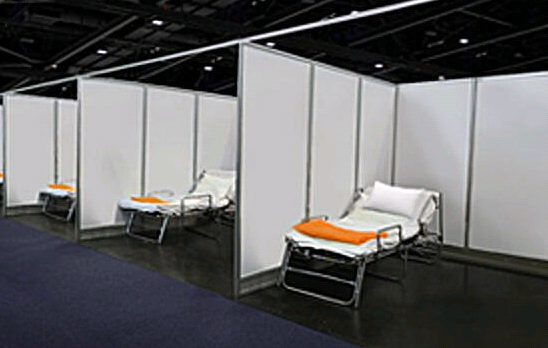
Three Common Barriers and How to Overcome Them
- Cultural Barriers. Growing up, Douglas knew his doctor. He knew his doctor’s family. ...
- Technological Barriers. When looking at a broader cohort, technology seems to be a sticking point for many consumers. ...
- Lack of Information. Douglas is also unclear on how having an account on the patient portal would benefit him. What if he has a question about his test results?
- Overcoming Barriers. If medical practices want to see an increase in patient portal use, they will have to address these three common barriers, which all revolve around the same problem ...
What are the barriers to patient portal implementation?
Open in a separate window Innovation: Patient Portal Barriers Lack of perceived usefulness, lack of accessibility, and guaranteeing privacy and securitywere identified as barriers for portal implementation.
Why do hospitals without patient portals fail to implement?
All hospitals without a patient portal mentioned negative attitude or opinion of medical professionalsand lack of specialist staffas barriers. These factors could negatively influence implementation.
What are some examples of barriers and facilitators in patient education?
Examples of barriers and facilitators Innovation: patient portal Accessibility, attractiveness, and credibility Individual professional Knowledge, attitude, and motivation to change Patient Knowledge, skills, and attitude Social context
How do patient portals improve patient-care communication?
Patient portals may have a range of functionalities that enable information exchange (such as having access to the EHR), which in turn may facilitate and improve the communication between the patient and the health care professional [11,14].

What are the disadvantages of patient portals?
Even though they should improve communication, there are also disadvantages to patient portals....Table of ContentsGetting Patients to Opt-In.Security Concerns.User Confusion.Alienation and Health Disparities.Extra Work for the Provider.Conclusion.
Why do some patients fail to participate in the use of the patient portal?
The reason why most patients do not want to use their patient portal is because they see no value in it, they are just not interested. The portals do not properly incentivize the patient either intellectually (providing enough data to prove useful) or financially.
What are the barriers to patient engagement?
Ability to self-manage illness or problems. Ability to engage in activities that maintain functioning and reduce health declines. Ability to be involved in treatment and diagnostic choices. Ability to collaborate with providers.
What are some key barriers to accessing health care?
Top Challenges Impacting Patient Access to HealthcareLimited appointment availability, office hours.Geographic, clinician shortage issues.Transportation barriers.Limited education about care sites.Social determinants of health barriers.
What are the benefits and challenges of implementing a patient portal?
What are the Top Pros and Cons of Adopting Patient Portals?Pro: Better communication with chronically ill patients.Con: Healthcare data security concerns.Pro: More complete and accurate patient information.Con: Difficult patient buy-in.Pro: Increased patient ownership of their own care.
Are patient portals effective?
Patient portal interventions were overall effective in improving a few psychological outcomes, medication adherence, and preventive service use. There was insufficient evidence to support the use of patient portals to improve clinical outcomes.
What are the 8 barriers in health and social care?
Barriers to accessing health, social care and early years...Geographical Barriers. Post Code Lottery- depending on your post code it could limit treatment entitlement.Financial Barriers. ... Psychological Barriers. ... Physical Barriers. ... Cultural and Language barriers.
What is a social barrier in health and social care?
Social barriers are related to the conditions in which people are born, grow, live, learn, work and age – or social determinants of health – that can contribute to decreased functioning among people with disabilities. Here are examples of social barriers: People with disabilities are far less likely to be employed.
What are the barriers to patient engagement in managing type 2 diabetes?
Lack of structured approach to diabetes management. Patients' financial situation and occupational constraints acting as a barrier to care. Insufficient knowledge of guideline recommendations. Insufficient knowledge leading to discontinuation of medicine.
What are the 4 barriers to accessing health services?
The study shows that lack of transport, availability of services, inadequate drugs or equipment, and costs, are the four major barriers for access.
What are the 3 main barriers for patients accessing hospital services?
Barriers to health care accessI. Problems with communication. ... II. Problems with accessing help. ... III. Problems with how health professionals relate to carers. ... IV. Complexity of the health care system and lack of support for carers.
What is the biggest barrier to access healthcare?
The Uninsured and Access to Healthcare As of 2017, more than 27 million non-elderly were uninsured in America. Even under the Affordable Care Act, people cite the high cost of insurance as the biggest barrier to gaining coverage.
Popular Posts:
- 1. anchor medical patient portal
- 2. riverside medical haddon heights patient portal
- 3. genesis women's clinic patient portal little rock
- 4. mayo clinic patient portal online
- 5. oregon oncology patient portal
- 6. brookwood medical center patient portal
- 7. joslin patient portal login
- 8. northwest women's healthcare patient portal
- 9. gcmc patient portal
- 10. physicians east greenville nc patient portal